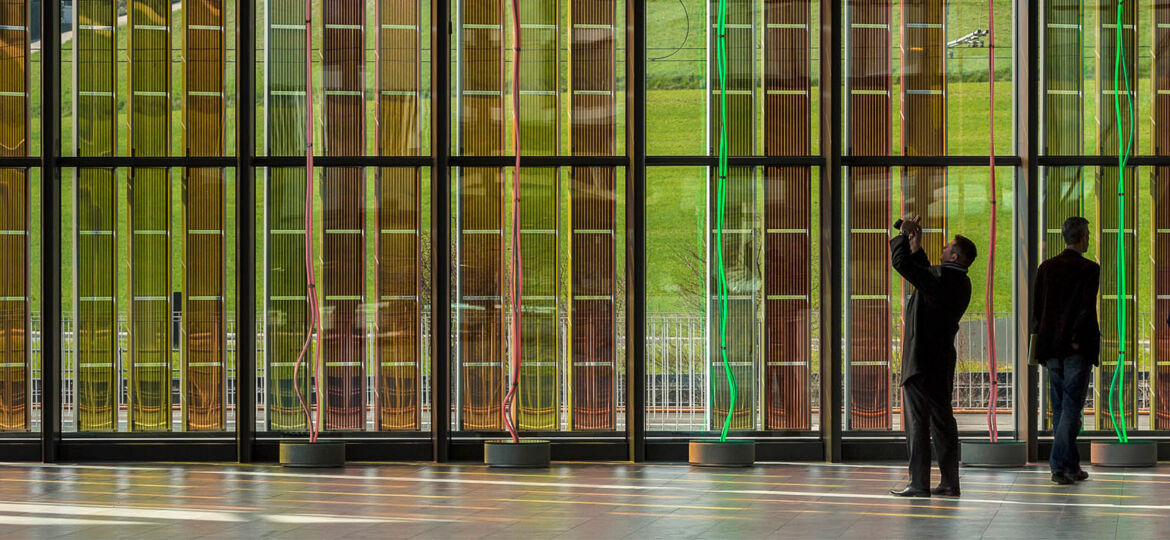
WHY THIS MATTERS IN BRIEF
Being able to print stable, high efficiency solar cells could one day help companies produce low cost solar panels in volume that that will reduce the cost of solar power and speed up its global adoption.
Renewables, especially solar power, is on a tear at the moment. Adoption by countries like Africa, China, India and the US is booming and prices are falling to rock bottom – solar power is now the cheapest form of energy in 58 countries around the world. Meanwhile scientists are creating new solar panel formats that produce energy from rain, and they’re developing new solar cells that are even more efficient than their predecessors – all of which just helps create a virtuous cycle for the green technology.
Now though, in another breakthrough, a team of scientists from Ecole Polytechnique Fédérale de Lausanne (EPFL) in Switzerland has created a low cost, fully printable solar cell that’s stayed stable in real world conditions for over a year – and now they’re moving it from the lab and into production.
The solar cells, the design of which was published in Nature Communications, were made from a special class of materials called Perovskites, a type of mineral which, since being used in solar cells in 2009, has been championed as the “next big thing” in renewable energy.
Perovskites have some interesting properties such as superconductivity, magnetoresistance and ionic conductivity – all of which are really important if you want to build a next generation solar cell. And less important if you’re building an oven…
In 2016, for example, Perovskites were theorised to be capable of producing solar cells with a maximum efficiency of 31 percent which is orders of magnitude greater than the efficiency of even today’s best record breaking solar cells which are edging towards 26 percent efficient, which, let’s face it is still good – only mother nature does better.
Although perovskite solar cells are easy to make and have achieved an efficiency of over 22 percent in the lab once they’re moved into the real world water and oxygen quickly destroys their solar harvesting capabilities – and similar problems have also besieged other printable solar cell technologies, including a bunch that used conducting polymers as the substrate and which, had they worked, could have been printed using the same technologies used to print polymer bank notes.
In the latest experiment though the scientists overcame these problems by using a new type of perovskite solar cell structure to create stable cells that with an 11.2 percent efficiency, which, while it’s still far off of the 22 percent, or 31 percent mark is still close enough to the typical efficiency of many of today’s silicon based rooftop solar panels to be interesting. Combine that with the fact that printing them could make them much cheaper and faster to produce and you could have a winning technology on your hands…
The team created what they called a hybrid 2D-3D perovskite solar cell that uses two different types of perovskites to combine two properties that are equality important if you ever want to hold out hope of creating a long lasting solar panel, namely oxygen and water resistance, and electric, or charge, transport.
The design is simple, the 2D perovskite, which forms the top layer of the panel, acts as a protective window against moisture and helps preserve the electricity generating capability if the 3D structured perovskite beneath it.
The two different types of perovskite were created with a simple “wet chemistry” method in a test tube and mixed together at various ratios to optimise the solar cell.
“The important finding in [this] is identifying the presence of a multi-dimensional 2D – 3D interface,” said Mohammad Khaja Nazeeruddin, one of the project leaders, “we believe [this] will trigger many further studies… widening the prospects for perovskite photovoltaics.”
The hybrid perovskite solar cells were made layer by layer, like a sandwich, by placing different solar cell “ingredients” on top of each other, and to demonstrate the manufacturing potential of the technology the team first made a small 10x10cm cell that could last more than 10,000 hours under standard conditions and that was 14.6 percent efficient.
In the future the team hope that they can optimise the hybrid structure to increase its durability and efficiency even further.
“Further interface engineering by functionalised multi-dimensional 2D-3D interfaces, and preferential orientation of perovskite crystals would be the focus of our laboratory” said Nazeeruddin.
Soon lower cost, more efficient solar panels could hit the market and that’ll be great news for everyone who’s interested in renewable energy.

















[…] Source link […]